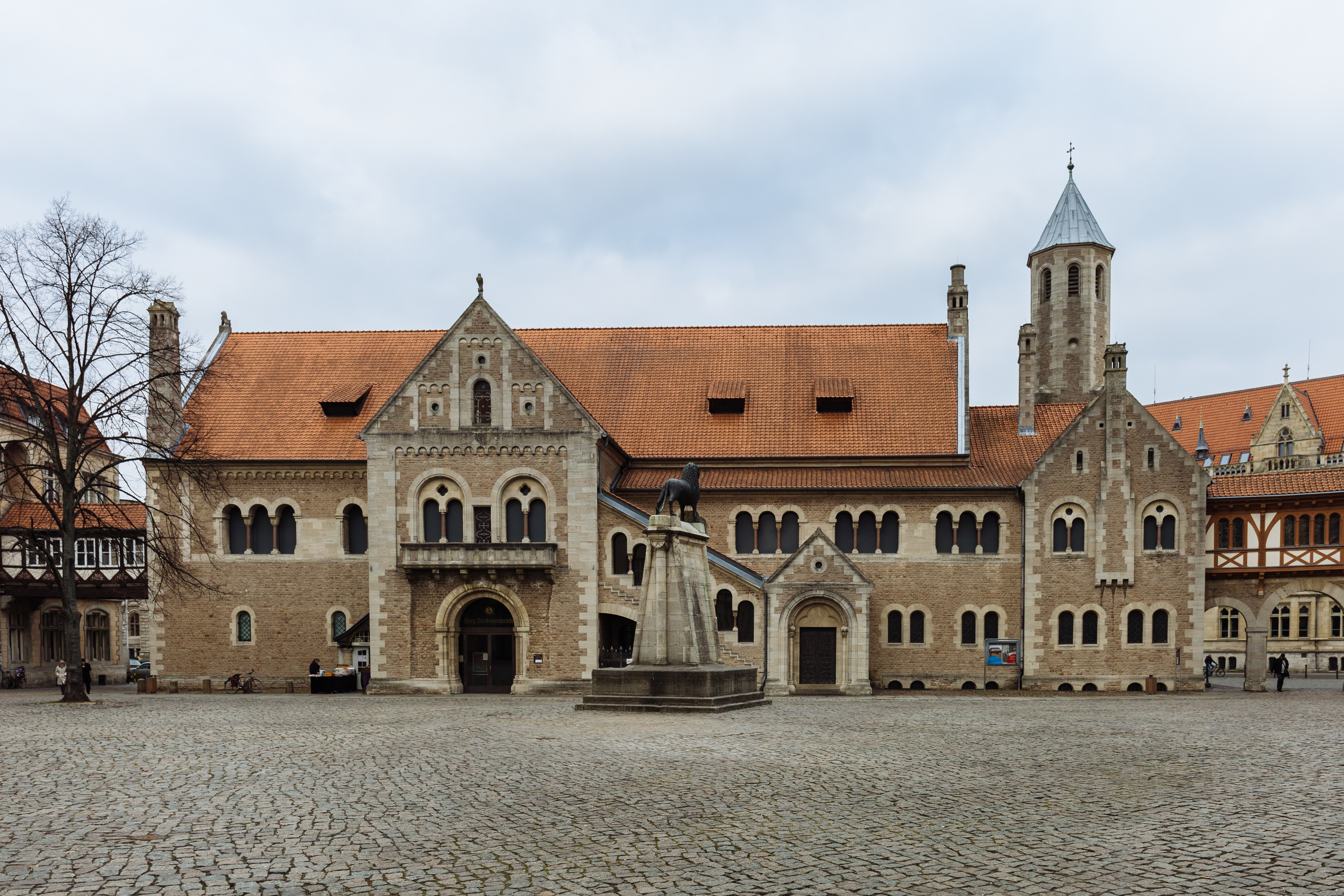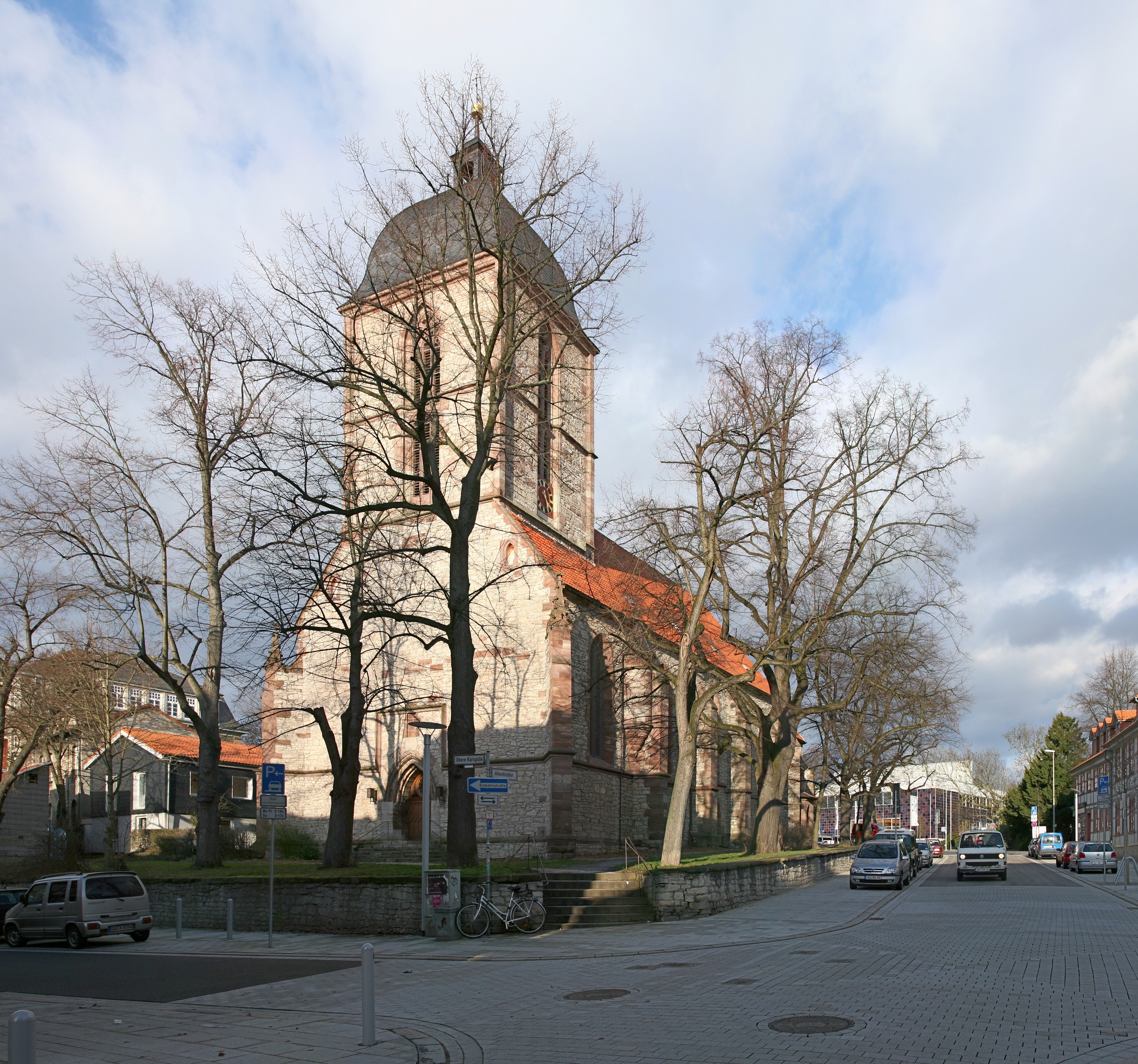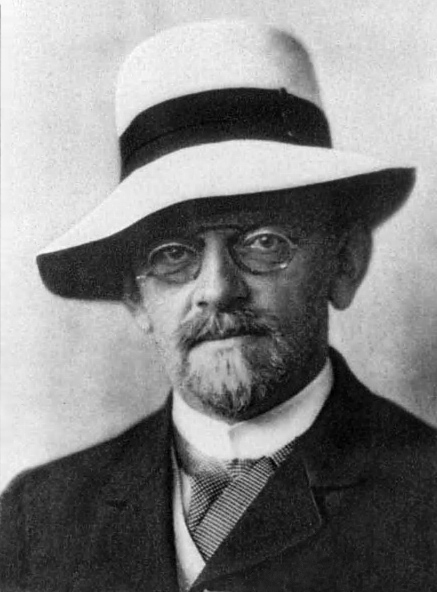|
Richard Dedekind
Julius Wilhelm Richard Dedekind (; ; 6 October 1831 – 12 February 1916) was a German mathematician who made important contributions to number theory, abstract algebra (particularly ring theory), and the axiomatic foundations of arithmetic. His best known contribution is the definition of real numbers through the notion of Dedekind cut. He is also considered a pioneer in the development of modern set theory and of the philosophy of mathematics known as ''logicism''. Life Dedekind's father was Julius Levin Ulrich Dedekind, an administrator of Collegium Carolinum in Braunschweig. His mother was Caroline Henriette Dedekind (née Emperius), the daughter of a professor at the Collegium. Richard Dedekind had three older siblings. As an adult, he never used the names Julius Wilhelm. He was born in Braunschweig (often called "Brunswick" in English), which is where he lived most of his life and died. His body rests at Braunschweig Main Cemetery. He first attended the Collegium Carol ... [...More Info...] [...Related Items...] OR: [Wikipedia] [Google] [Baidu] |
Braunschweig
Braunschweig () or Brunswick ( ; from Low German , local dialect: ) is a List of cities and towns in Germany, city in Lower Saxony, Germany, north of the Harz Mountains at the farthest navigable point of the river Oker, which connects it to the North Sea via the rivers Aller (Germany), Aller and Weser. In 2024, it had a population of 272,417. The Braunschweig-Wolfsburg-Salzgitter region had 1.02 million residents including the cities Wolfsburg and Salzgitter, it is the second largest urban center in Lower Saxony after Hanover. The urban agglomeration of Braunschweig had a population of 551,000 with almost 45% having a migration background, making it the most diverse urban agglomeration in the whole Niedersachsen, state. The city consists of 37.5% immigrants (approximately 102,000) with a high amount of migrants coming from other European countries, Asia and Africa. 73% of the Germans residing in Braunschweig come from different parts of the country, particularly North Rhine West ... [...More Info...] [...Related Items...] OR: [Wikipedia] [Google] [Baidu] |
Mathematician
A mathematician is someone who uses an extensive knowledge of mathematics in their work, typically to solve mathematical problems. Mathematicians are concerned with numbers, data, quantity, mathematical structure, structure, space, Mathematical model, models, and mathematics#Calculus and analysis, change. History One of the earliest known mathematicians was Thales of Miletus (); he has been hailed as the first true mathematician and the first known individual to whom a mathematical discovery has been attributed. He is credited with the first use of deductive reasoning applied to geometry, by deriving four corollaries to Thales's theorem. The number of known mathematicians grew when Pythagoras of Samos () established the Pythagorean school, whose doctrine it was that mathematics ruled the universe and whose motto was "All is number". It was the Pythagoreans who coined the term "mathematics", and with whom the study of mathematics for its own sake begins. The first woman math ... [...More Info...] [...Related Items...] OR: [Wikipedia] [Google] [Baidu] |
Göttingen
Göttingen (, ; ; ) is a college town, university city in Lower Saxony, central Germany, the Capital (political), capital of Göttingen (district), the eponymous district. The River Leine runs through it. According to the 2022 German census, the population of Göttingen was 124,548. Overview The origins of Göttingen lay in a village called ''Gutingi, ''first mentioned in a document in 953 AD. The city was founded northwest of this village, between 1150 and 1200 AD, and adopted its name. In Middle Ages, medieval times the city was a member of the Hanseatic League and hence a wealthy town. Today, Göttingen is famous for its old university (''Georgia Augusta'', or University of Göttingen, "Georg-August-Universität"), which was founded in 1734 (first classes in 1737) and became the most visited university of Europe. In 1837, seven professors protested against the absolute sovereignty of the House of Hanover, kings of Kingdom of Hanover, Hanover; they lost their positions, but ... [...More Info...] [...Related Items...] OR: [Wikipedia] [Google] [Baidu] |
University Of Berlin
The Humboldt University of Berlin (, abbreviated HU Berlin) is a public research university in the central borough of Mitte in Berlin, Germany. The university was established by Frederick William III on the initiative of Wilhelm von Humboldt, Johann Gottlieb Fichte and Friedrich Daniel Ernst Schleiermacher as the University of Berlin () in 1809, and opened in 1810. From 1828 until its closure in 1945, it was named the (Royal) Friedrich Wilhelm University of Berlin (FWU Berlin; ). During the Cold War, the university found itself in East Berlin and was ''de facto'' split in two when the Free University of Berlin opened in West Berlin. The university received its current name in honour of Alexander and Wilhelm von Humboldt in 1949. The university is divided into nine faculties including its medical school shared with the Freie Universität Berlin. The university has a student enrollment of around 35,000 students, and offers degree programs in some 171 disciplines from und ... [...More Info...] [...Related Items...] OR: [Wikipedia] [Google] [Baidu] |
Euler Integral
In mathematics, there are two types of Euler integral: # The ''Euler integral of the first kind'' is the beta function \mathrm(z_1,z_2) = \int_0^1t^(1-t)^\,dt = \frac # The ''Euler integral of the second kind'' is the gamma function \Gamma(z) = \int_0^\infty t^\,\mathrm e^\,dt For positive integers and , the two integrals can be expressed in terms of factorials and binomial coefficients: \Beta(n,m) = \frac = \frac = \left( \frac + \frac \right) \frac \Gamma(n) = (n-1)! See also *Leonhard Euler Leonhard Euler ( ; ; ; 15 April 170718 September 1783) was a Swiss polymath who was active as a mathematician, physicist, astronomer, logician, geographer, and engineer. He founded the studies of graph theory and topology and made influential ... * List of topics named after Leonhard Euler References External links and references * NIST Digital Library of Mathematical Functiondlmf.nist.gov/5.2.1relation 5.2.1 andlmf.nist.gov/5.12relation 5.12.1 Gamma and related functions ... [...More Info...] [...Related Items...] OR: [Wikipedia] [Google] [Baidu] |
Moritz Stern
Moritz Abraham Stern (29 June 1807 – 30 January 1894) was a German mathematician. Stern became ''Ordinarius'' (full professor) at Göttingen University in 1858, succeeding Carl Friedrich Gauss. Stern was the first Jewish full professor at a German university who attained the position without changing his Jewish religion. Although Carl Gustav Jacobi preceded him (by three decades) as the first Jew to obtain a math professorial chair in Germany, Jacobi's family had converted to Christianity long before then. As a professor, Stern taught Gauss's student Bernhard Riemann. Stern was very helpful to Gotthold Eisenstein in formulating a proof of the quadratic reciprocity theorem. Stern was interested in primes that cannot be expressed as the sum of a prime and twice a square (now known as Stern primes). He is known for formulating Stern's diatomic series. :1, 1, 2, 1, 3, 2, 3, 1, 4, … that counts the number of ways to write a number as a sum of powers of two with no power used mo ... [...More Info...] [...Related Items...] OR: [Wikipedia] [Google] [Baidu] |
Braunschweig Main Cemetery
The Braunschweig Main Cemetery () on Helmstedter street is a historic, church-owned and operated Lutheran cemetery located in the city of Braunschweig, in Germany. With a land area of approximately 43 ha, it is the second largest church-owned Christian cemetery in Germany, after the Stahnsdorf South-Western Cemetery near Potsdam. The cemetery is operated by the administration of the ''Evangelical Lutheran Provost Association of Braunschweiger Land''. The cemetery ground contains two residential buildings built for the cemetery manager and gardener at the main entrance which is used as the headquarters of the cemetery administration today, a neo-Gothic chapel, as well as a crematorium facility established in 1911. History and description The Central Cemetery of Braunschweig was inaugurated on October 1, 1887, by Mayor Wilhelm Pockels and the Lutheran provost General- Superintendent Wilhelm Beste consecrated the burial ground, along with the chapel. The first burial recorded was of ... [...More Info...] [...Related Items...] OR: [Wikipedia] [Google] [Baidu] |
Logicism
In the philosophy of mathematics, logicism is a programme comprising one or more of the theses that – for some coherent meaning of 'logic' – mathematics is an extension of logic, some or all of mathematics is reducible to logic, or some or all of mathematics may be modelled in logic. Bertrand Russell and Alfred North Whitehead championed this programme, initiated by Gottlob Frege and subsequently developed by Richard Dedekind and Giuseppe Peano. Overview Dedekind's path to logicism had a turning point when he was able to construct a model satisfying the axioms characterizing the real numbers using certain sets of rational numbers. This and related ideas convinced him that arithmetic, algebra and analysis were reducible to the natural numbers plus a "logic" of classes. Furthermore by 1872 he had concluded that the naturals themselves were reducible to sets and mappings. It is likely that other logicists, most importantly Frege, were also guided by the new theories of the ... [...More Info...] [...Related Items...] OR: [Wikipedia] [Google] [Baidu] |
Philosophy Of Mathematics
Philosophy of mathematics is the branch of philosophy that deals with the nature of mathematics and its relationship to other areas of philosophy, particularly epistemology and metaphysics. Central questions posed include whether or not mathematical objects are purely abstract entities or are in some way concrete, and in what the relationship such objects have with physical reality consists. Major themes that are dealt with in philosophy of mathematics include: *''Reality'': The question is whether mathematics is a pure product of human mind or whether it has some reality by itself. *''Logic and rigor'' *''Relationship with physical reality'' *''Relationship with science'' *''Relationship with applications'' *''Mathematical truth'' *''Nature as human activity'' (science, the arts, art, game, or all together) Major themes Reality Logic and rigor Mathematical reasoning requires Mathematical rigor, rigor. This means that the definitions must be absolutely unambiguous and th ... [...More Info...] [...Related Items...] OR: [Wikipedia] [Google] [Baidu] |
Set Theory
Set theory is the branch of mathematical logic that studies Set (mathematics), sets, which can be informally described as collections of objects. Although objects of any kind can be collected into a set, set theory – as a branch of mathematics – is mostly concerned with those that are relevant to mathematics as a whole. The modern study of set theory was initiated by the German mathematicians Richard Dedekind and Georg Cantor in the 1870s. In particular, Georg Cantor is commonly considered the founder of set theory. The non-formalized systems investigated during this early stage go under the name of ''naive set theory''. After the discovery of Paradoxes of set theory, paradoxes within naive set theory (such as Russell's paradox, Cantor's paradox and the Burali-Forti paradox), various axiomatic systems were proposed in the early twentieth century, of which Zermelo–Fraenkel set theory (with or without the axiom of choice) is still the best-known and most studied. Set the ... [...More Info...] [...Related Items...] OR: [Wikipedia] [Google] [Baidu] |
Real Number
In mathematics, a real number is a number that can be used to measure a continuous one- dimensional quantity such as a duration or temperature. Here, ''continuous'' means that pairs of values can have arbitrarily small differences. Every real number can be almost uniquely represented by an infinite decimal expansion. The real numbers are fundamental in calculus (and in many other branches of mathematics), in particular by their role in the classical definitions of limits, continuity and derivatives. The set of real numbers, sometimes called "the reals", is traditionally denoted by a bold , often using blackboard bold, . The adjective ''real'', used in the 17th century by René Descartes, distinguishes real numbers from imaginary numbers such as the square roots of . The real numbers include the rational numbers, such as the integer and the fraction . The rest of the real numbers are called irrational numbers. Some irrational numbers (as well as all the rationals) a ... [...More Info...] [...Related Items...] OR: [Wikipedia] [Google] [Baidu] |
Peano Axioms
In mathematical logic, the Peano axioms (, ), also known as the Dedekind–Peano axioms or the Peano postulates, are axioms for the natural numbers presented by the 19th-century Italian mathematician Giuseppe Peano. These axioms have been used nearly unchanged in a number of metamathematical investigations, including research into fundamental questions of whether number theory is consistent and complete. The axiomatization of arithmetic provided by Peano axioms is commonly called Peano arithmetic. The importance of formalizing arithmetic was not well appreciated until the work of Hermann Grassmann, who showed in the 1860s that many facts in arithmetic could be derived from more basic facts about the successor operation and induction. In 1881, Charles Sanders Peirce provided an axiomatization of natural-number arithmetic. In 1888, Richard Dedekind proposed another axiomatization of natural-number arithmetic, and in 1889, Peano published a simplified version of them as ... [...More Info...] [...Related Items...] OR: [Wikipedia] [Google] [Baidu] |





